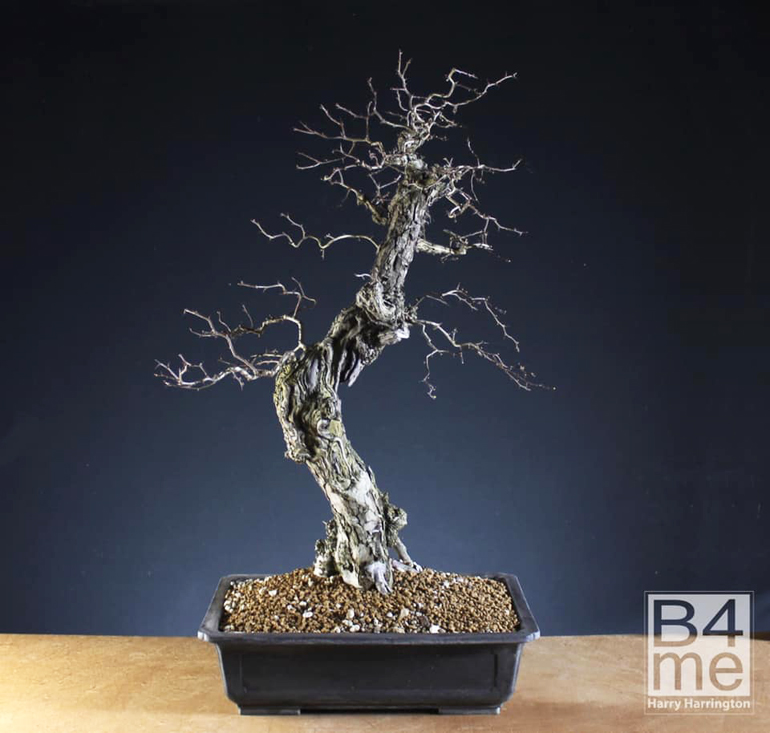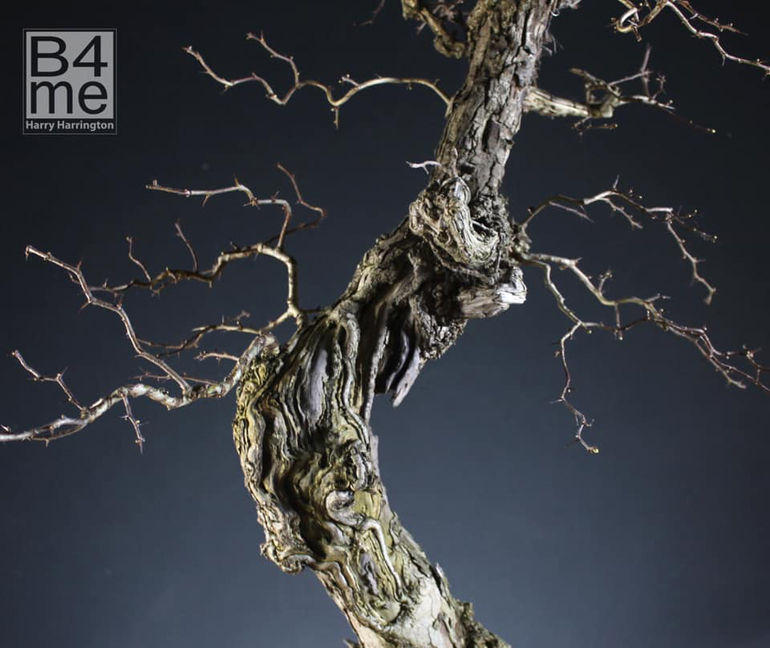
Another Hawthorn that belongs to Harry Harrington. It isn't as advanced as the one we featured yesterday, but it's full of promise
Yesterday we featured a freshly repotted Hawthorn by Harry Harrington. Here’s the rub… the tree hadn’t been repotted for 15 years! As you might imagine this provoked some questions by several readers. So last night I emailed Harry and this morning I woke up to his reply (before you read on, I suggest you take a look at yesterday’s post).
So here’s your answer, in Harry’s own words…
“Ive been asked this quite a few times since Saturday!
The reason that the tree has not been repotted for so long is 3-fold. Firstly, the branch structure is set and established, so I do not require strong vegetative growth anymore. Rather, I need fine and delicate growth to create ramification. On a hawthorn, as with many other deciduous species, this delicate growth only comes with reduced root-growth and a soil with fine grain. Root pruning this tree will lead to 3-4 years of coarse top growth that is unusual in terms of aesthetic design. I should also add that with hawthorn specifically, when the tree is rootbound, it enters a mature flowering phase. Root pruning can reverse this and the tree can return to a juvenile vegetative phase where flowering does not occur as well.”
Continued below…
TWO NEW SPECIALS
20% OFF KOYO BONSAI TOOLS
20% OFF OKATSUNE BONSAI & GARDEN TOOLS
Specials include items already discounted
–

Yesterday's Hawthorn. The tree in question
Harry continued from above…
“Secondly, I am not focussing on creating an impressive nebari on this particular tree and generally speaking, I don’t bother trying to on hawthorns. So, I have no need encourage lateral roots by repeatedly pruning the downward growing roots (as I showed with another post I made this weekend on an Euonymus).
“Lastly, the tree is happy and healthy. It grows well, extending new vegetative shoots each year and does not suffer from insect or fungal attack, both of which are indicative of a tree under stress. Some species, such as Ulmus/Elm require periodic root-pruning simply because they can show signs of distress after just a couple of years of being rootbound.
“I should also add that the tree continued to be healthy in its environment because it is growing in an inorganic substrate that had not collapsed as can happen with organic soils or substrate with a large percentage of low-fired clays such as akadama.”
For more of Harry’s bonsai wisdom, you can visit his Bonsai4me website and his fb timeline

Here's a closeup of today's Hawthorn from Harry's fb timeline
TWO SPECIALS END SOON
25% – 30% OFF ALL BOOKs
20% OFF BONSAI CLOTHINg
Specials include items already discounted
THESE SPECIALS END TUES, MARCH 5th at 11:50pm EST